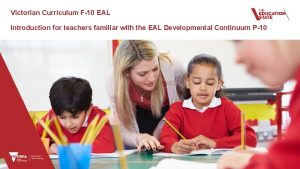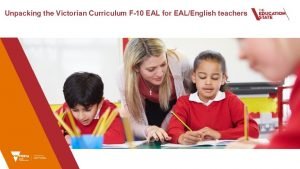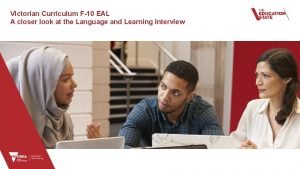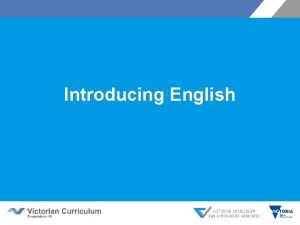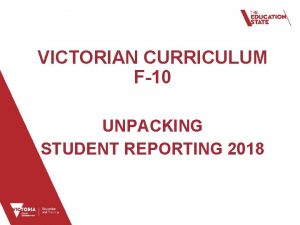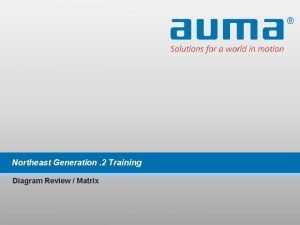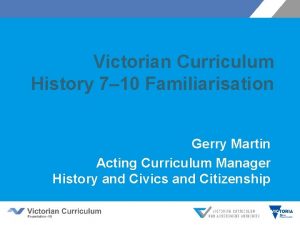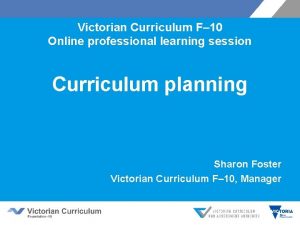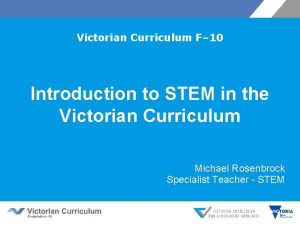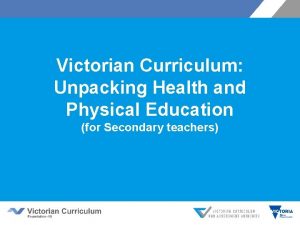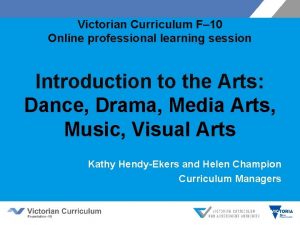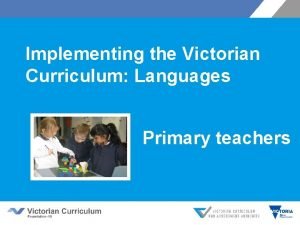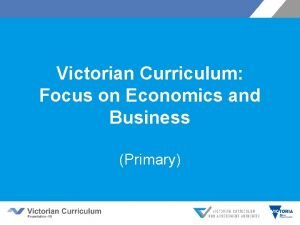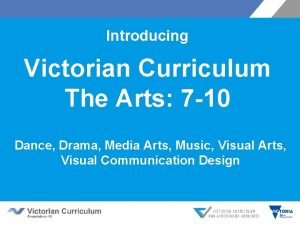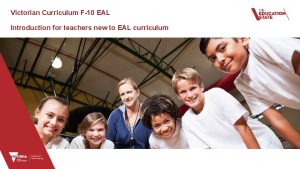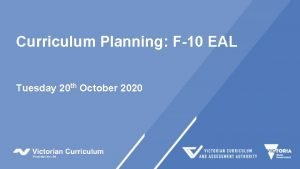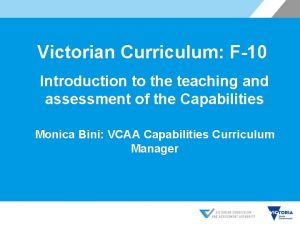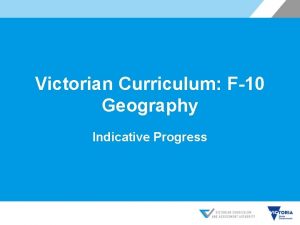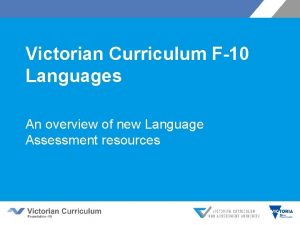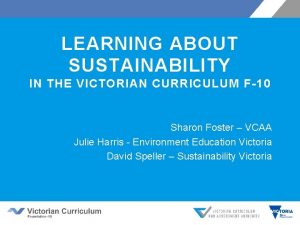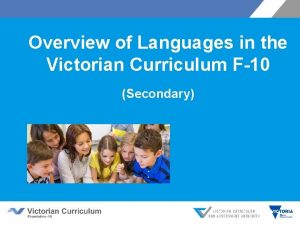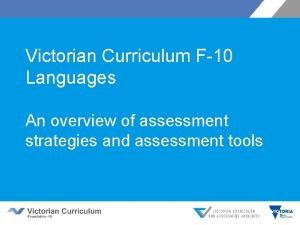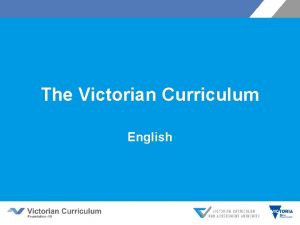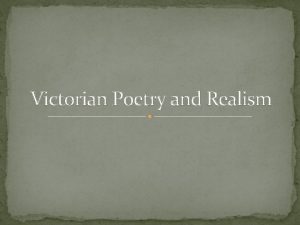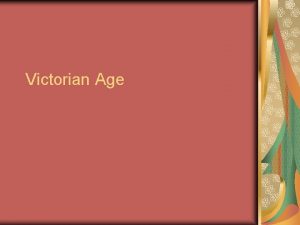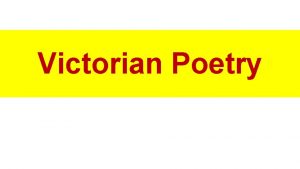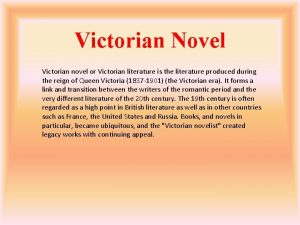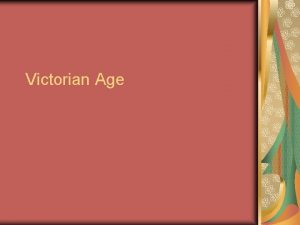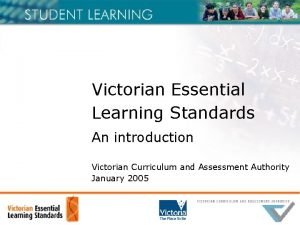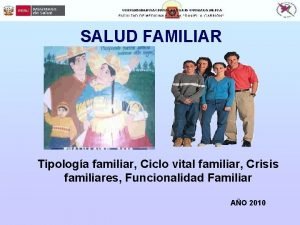Victorian Curriculum F10 EAL Introduction for teachers familiar






















- Slides: 22

Victorian Curriculum F-10 EAL Introduction for teachers familiar with the EAL Developmental Continuum P-10 1

Contents Slide/s 3 Curriculum, assessment and reporting arrangements 2013 -19 4 Curriculum, assessment and reporting arrangements 2020 5 Curriculum, assessment and reporting arrangements 2021 6 Why the change to a new curriculum? Why an EAL curriculum that covers all learning areas? 7 Content of the curriculum 8 What has changed? What continues? 9 Stages vs pathways 10 Are they the same? Compare the achievement standards…A 11 Are they the same? Compare the achievement standards…B 12 Are they the same? Compare the achievement standards…C 13 What else is available? 14 -15 Illustrations of content on the VCAA website 16 Illustrations of content on the VCAA website – elaborations 17 Illustrations of content on the VCAA website – achievement standards 18 Illustration of content in the Scope and Sequence documents 19 Plurilingual strategies 20 Assessment and reporting 21 Links, resources and contacts 2

EAL CURRICULUM, ASSESSMENT AND REPORTING 2013 - 2019 Curriculum and assessment Reporting EAL Companion to Aus. VELS EAL Developmental Continuum P-10 3

EAL CURRICULUM, ASSESSMENT AND REPORTING 2020 – transition year Curriculum and assessment Reporting EAL Companion to Aus. VELS EAL Developmental Continuum P-10 OR Victorian Curriculum F 10 EAL Victorian Curriculum F-10 EAL 2020 Reporting Tool 4

EAL CURRICULUM, ASSESSMENT AND REPORTING 2021 Curriculum and assessment Reporting Victorian Curriculum F-10 EAL Reporting Tool Visit the VCAA Victorian Curriculum F-10 EAL website: Victorian Curriculum F-10 5

Why the change to a new curriculum? Why an EAL curriculum that covers all learning areas? The EAL curriculum has not been updated since 2012 when the EAL Companion to the Aus. VELS was released. All other curriculum areas started to teach to the Victorian Curriculum in 2017. The Victorian Curriculum F-10 EAL: • is the final curricula published in the Victorian Curriculum F-10 • is designed and presented in the same way as all other Victorian Curriculum learning area curricula to provide teachers with consistency and clarity • builds on the research and strengths of previous curriculum frameworks and the EAL Developmental Continuum P – 10 • is designed to take into account the diverse backgrounds and varied prior learning experiences of EAL students in Victorian government schools • recognises that students are being immersed in English medium education, and that this can happen early, mid or late in their school education and development • recognises that students need to access and demonstrate learning in all learning areas, and that therefore all teachers need to: • • understand the language students need to access the content of the learning areas • understand the proficiency levels of the EAL students in their class/es • be able to plan for and support the language learning of EAL students in order to support their learning of content recognises that EAL students know more than one language and that they are plurilingual, meaning that they have a range of linguistic and cultural knowledge that can be activated to support communication and learning in and of English in all classrooms. Read the VCAA Rationale and Aims: Rationale and aims 6

Content of the curriculum Pathways Levels Modes Pathway A – early immersion (Foundation to Year 2) A 1 A 2 Speaking and listening Pathway B – mid immersion (Years 2 to 8) BL B 1 B 3 CL Reading and viewing Strands Communication Sub-strands Communication Text structure and organisation Grammatical patterns Content description Elaborations Achievement standards B 2 Pathway C – late immersion (Years 7 to 10) Speaking and listening achievement standard for each level C 2 C 3 C 4 Writing Cultural and plurilingual awareness Linguistic structures and features Phonology Grapho-phonics C 1 Word knowledge Cultural understandings Plurilingual strategies Content description Elaborations Reading and viewing achievement standard for each level Writing achievement standard for each level 7

What has changed? What continues? Continuity Pathways • • Maintains three points of entry and a curriculum relevant to each Labels ‘A’ and ‘B’ still used for students in primary years Change • • ‘S’ relabelled as ‘C’ for students in secondary years Points of entry based on immersion in English medium education, with overlap in year level ranges Levels Maintains the number of levels for each pathway, including the preliterate ‘L’ levels Modes No change Strands ‘Aspects of language development’ content re-organised into Strands and Substrands as below Sub-strands Linguistic structures and features Texts and text responses Content descriptions Elaborations ‘S’ relabelled as ‘C’ Linguistic structures and features Text structure and organisation Maintaining and negotiating communication Cultural conventions of language use Cultural and plurilingual awareness Cultural understandings Indicators of progress in the EAL Developmental Continuum re-used as content descriptions or elaborations Plurilingual strategies NEW! More explicit descriptions of what to teach Achievement standards Assessment and reporting High level of correspondence between achievement standards • The curriculum document does not include sub-stages • The Department’s Assessment and Reporting advice allows teachers to report on progress towards as well as at the achievement standards Updated and consistent terminology, clearer progression of learning, removal of deficit language • Clear delineation of curriculum, assessment and reporting advice • EAL Developmental Continuum cannot be used as a curriculum document 8

Stages vs pathways A Stages – Foundation to Year 2 B Stages – Years 3 to 6 S Stages – Years 7 to 10 EAL Companion to Aus. VELS Stages A 1 A 2 BL B 1 B 2 B 3 SL S 1 S 2 S 3 S 4 Victorian Curriculum F-10 EAL Levels A 1 A 2 BL B 1 B 2 B 3 CL C 1 C 2 C 3 C 4 Pathway A – early immersion (Foundation to Year 2) Pathway B – mid immersion (Years 2 to 8) Pathway C – late immersion (Years 7 to 10) What is the intent of the overlap in year levels across the pathways? • • ‘early’, ‘mid’ and ‘late’ immersion refer to the point in a student’s life at which they enter an English-medium education setting EAL students starting school in Australia will typically be at the immersion level described by the pathways and year levels above the overlap provides flexibility in determining the most appropriate developmental pathway for each EAL student while typically, a Foundation/Year 1 student will start on Pathway A, a Year 3, 4, 5 or 6 student will start on Pathway B and a Year 7, 8, 9 or 10 student on Pathway C, EAL students starting school in Year 2 might benefit from starting on the pathway that ensures they receive the most developmentally appropriate input, that is Pathway B. Likewise, a Year 2 student who reaches the end of Pathway A in the middle of the year could move to the upper levels of Pathway B. • some students may benefit from starting on one pathway and moving to the next when it is developmentally appropriate to do so rather than based on their year level. For example, a Year 6 student in a P-12 College who is a beginner might remain on Pathway B in Year 7 and even Year 8, if there is continuity of class or teacher, before switching to Pathway C. • in a typical situation, an EAL student enrolling in a secondary school in Year 7 will start on Pathway C and continue on the secondary EAL pathway until he or she transitions to the English standards or undertakes VCE EAL. 9

Are they the same? Compare the achievement standards…A Victorian Curriculum F-10 EAL Levels A 2 Writing EAL Companion to Aus. VELS A 2 Writing At Level A 2 students communicate ideas, events and experiences through At Stage A 2 students communicate ideas, events and experiences through simple texts based on familiar spoken and written language. They write for a simple texts based on familiar spoken and written language. They write for variety of personal and classroom purposes, using known and modelled a variety of personal and classroom purposes, using known and modelled structures and features. They write everyday texts and simple stories, recounts and factual texts based on their own and shared class experiences. recounts and factual texts based on their own and shared class They use their developing oral base and reading repertoire when writing experiences. Students use their developing oral base and reading their own texts. They write texts using simple but coherently linked repertoire when writing their own sentences, basic structures and well-known vocabulary. They use some coherently linked sentences, basic structures and well-known vocabulary. common irregular past tense verbs correctly, and link clauses using basic They use some common irregular past tense verbs correctly, and link conjunctions and connectives. They attempt to spell new words, based on clauses using basic conjunctions and connectives. They attempt to spell known spelling patterns and base words. They use vocabulary lists, new words, based on known spelling patterns and base words. They use modelled texts and familiar books to find how to write new words. They write vocabulary lists, modelled texts and familiar books to find how to write new letters legibly and make some changes to their texts when editing. They use words. They write letters legibly and make some changes to their texts advanced features of software applications to write and present their texts. when editing. texts. They write using simple yet 10

Are they the same? Compare the achievement standards…B Victorian Curriculum F-10 EAL Levels B 3 Reading and viewing EAL Companion to Aus. VELS B 3 Reading and viewing Reading and Viewing Reading and viewing At Level B 3 students read for a range of purposes and identify main ideas At Stage B 3 students read and view for a range of purposes and identify and specific information in classroom texts. These texts may be print or main ideas and specific information in classroom texts. They demonstrate digital, including visual, multimodal and interactive. Students demonstrate understanding of the main storyline and most key information when retelling, paraphrasing and answering questions, and can compare some retelling, paraphrasing, and answering questions, and they compare some detail in texts. Students demonstrate some awareness of how information details in texts. They demonstrate some awareness of how information is is organised in English texts. Students recognise the cohesive devices organised in English texts. They recognise the cohesive devices connecting ideas and the organisation of information in a text, and use appropriate metalanguage to talk about the structure and features of a text. They recognise how relationships are signalled by an increasing range of conjunctions. Students integrate a number of strategies to help them read conjunctions. They integrate a number of strategies to help them read new texts. They use accessible English dictionaries to check the meanings of of new words and understand how to use a contents page, an index, new words and use contents pages, indexes, glossaries and headings to find information. 11

Are they the same? Compare the achievement standards…C Victorian Curriculum F-10 EAL Levels C 4 Speaking and listening Speaking and Listening At Level C 4 students demonstrate greater autonomy and control over their use of English, combining their expanding vocabulary with the appropriate use of a wide range of complex grammatical features including modal verbs, passive voice and tenses. They demonstrate understanding of the ways that pauses, stress, rhythm and intonation help to clarify meaning. They speak clearly and pronounce most sounds correctly. They take part in extended discourse on factual and interpersonal topics using an appropriate modelled structure, and respond appropriately to listeners’ reactions. They identify the intention of supportive speakers, using their knowledge of how intonation, volume, stress and lexical choices support and convey meaning and emphasise opinions and emotions. They identify examples of relatively explicit subjective language. They extract information from challenging spoken texts, using guide questions and taking notes on key ideas. EAL Companion to Aus. VELS S 4 Speaking and listening At Stage S 4 students demonstrate greater autonomy and control over their use of English, combining their expanding vocabulary with the appropriate use of complex grammatical features including, modals, conditionals, passive voice and a wide range of tenses and connectives. They demonstrate understanding of the qualities that affect fluency in English including pausing, stress, rhythm and intonation. They pronounce most sounds correctly. They take part in extended discourse on factual and interpersonal topics using an appropriate modelled structure, and respond appropriately to listeners’ reactions. They identify the intention of speakers, using their knowledge of how intonation, volume, stress and lexical choices support and convey meaning and emphasise opinions and emotions. They identify examples of relatively overt subjective language. They extract information from challenging spoken texts, using guide questions, completing tables and taking notes on key ideas. 12

What else is available? VCAA curriculum resources DET support resources Sample progressions Student pathways Language and literacy interview A closer look at the language and literacy interview Rationale and Aims Learning in English as an Additional Language Scope and Sequence Glossary Pathways Level descriptions Reporting tool - substages 13

Illustrations of content on the VCAA website Pathway A selected Pathways Level descriptions Speaking and listening is the first mode listed in the Victorian Curriculum F-10 EAL, followed by Reading and Viewing, then Writing. Levels The Victorian Curriculum F-10 English lists Reading and Viewing as the first mode, then Writing, then Speaking and Listening. Mode Strand Sub-strand Content description Access from the VCAA Victorian Curriculum F-10 EAL website: Victorian Curriculum F-10 14

Illustrations of content on the VCAA website Strand Sub-strand Content description what to teach Content description Sub-strand Content description Each content description has a unique code: • VC – Victorian Curriculum • EAL – EAL • a letter for the strand • C - Communication • L - Linguistic Structures and Features • A - Cultural and Plurilingual Awareness • numerical identifier. Sub-strand Content description Hover and click on a code to see the elaborations for that content description Content description 15

Illustrations of content on the VCAA website – elaborations Sub-strand Content description Hover and click on a code to see the elaborations for that content description Elaborations 16

Illustrations of content on the VCAA website – achievement standards Level Mode Achievement standard 17

Illustrations of content in Scope and Sequence documents provide an overview of content descriptions and achievement standards for each pathway, and show the continua of learning through the content descriptions for each sub-strand. Pathway Levels Mode Strand Sub-strand Content descriptions Access from the VCAA Victorian Curriculum F-10 EAL website: Victorian Curriculum F-10 18

Plurilingual strategies • • • The Plurilingual strategies sub-strand has been included in the curriculum because EAL students are plurilingual, meaning that they have a range of linguistic and cultural knowledge that can be activated to support communication and learning in and of English in all classrooms. It may represent a change in mindset for some teachers, from expecting that English and English alone is the language of the classroom to understanding that all languages spoken or used by a person form a repertoire that can be drawn upon for learning both content and language. While there are content descriptions relating to plurilingual strategies, these are not included in achievement standards. Teachers are not asked to assess students’ achievement in other languages, but to provide opportunities for students to use their first language and leverage their existing knowledge to support further learning. Elaborations show what this looks like in a classroom. Resources • Find advice embedded within: Foundation to Year 6 Literacy Teaching Toolkit • Read: EAL/D learners are plurilingual • Watch: AITSL – Multilingual approaches to teaching and learning • Watch and listen, or read: Vic. TESOL – The diverse interactions of Aboriginal EAL/D speakers • Watch and listen: Multilingualism and Translanguaging Presentation Plurilingualism (as defined in EAL glossary) The ability of a person who has competence in more than one language to switch between them when necessary for ease of communication and learning. It is the interconnected knowledge of multiple languages. Pathway B, Writing – plurilingual strategies – some elaborations BL miming actions or showing a picture to explain the meaning of the word sought in English B 1 recording the word in home language and English in personal dictionary or vocabulary chart B 2 planning a text collaboratively by discussing ideas, structure and language with same language peers before writing B 3 seeking and giving feedback with peers on draft texts using home language and English 19

Assessment and reporting In 2020 schools that choose to trial part or all of the Victorian Curriculum F-10 EAL can use: • the TEAL assessment resources to plan and support classroom assessment programs • the 2020 EAL Reporting Tool to identify student progress towards the achievement standards (described as ‘Beginning’ or ‘Consolidating’). The 2020 Reporting Tool provides examples of student skills and knowledge at two substages before they meet the Achievement Standard. Substages and levels are also represented numerically as Xx. 1 (Beginning), Xx. 2 (Consolidating), and Xx. 3 (Achieved). The beginning and consolidating substages support teachers to plan for the next stage in a student’s learning, and to report progress where students may not have achieved a standard but have nonetheless progressed in their learning. Sample report format providing level, descriptor, score and student progress for each mode Access TEAL assessment resources: Access the 2020 Reporting Tool: Assessment tools Reporting tool 20

Links, resources and contacts VCAA – Victorian Curriculum F-10 EAL website: includes links to interactive curriculum, Rationale and aims, Structure, Learning in English as an Additional Languages, Scope and Sequence charts and Glossary. VCAA – EAL curriculum area resources: includes Language and literacy interview and sample progressions DET – Tools to Enhance Assessment Literacy for Teachers of EAL Learners – assessment tools and professional learning DET – 2020 Reporting tool: includes substage descriptions and links to work samples DET – EAL Curriculum Implementation School Guide: suggested steps aligned with the FISO Improvement Cycle DET – EAL Developmental Continuum P-10: current to end of 2020 VCAA – EAL Companion to Aus. VELS: current to end of 2020 Other self study or professional learning resources provided in the FUSE resource package: • Unpacking the EAL content descriptions for learning area teachers • Unpacking the EAL curriculum for EAL/English teachers • A closer look at the Language and Literacy interview • Student pathways VCAA – Kellie Heintz, EAL Curriculum Manager heintz. kellie. a@edumail. vic. gov. au (03) 9603 7953 DET – eal@edumail. vic. gov. au (03) 7022 1111 21

© State of Victoria (Department of Education and Training) 2020 Victorian Curriculum F-10 EAL – Introduction for teachers familiar with the EAL Developmental Continuum is provided under a Creative Commons Attribution 4. 0 International licence. You are free to re-use the work under that licence, on the condition that you credit the State of Victoria (Department of Education and Training), indicate if changes were made and comply with the other licence terms, see: Creative Commons Attribution 4. 0 International The licence does not apply to: • any images, photographs, trademarks or branding, including the Victorian Government logo and the DET logo; and • content supplied by third parties. Copyright queries may be directed to copyright@edumail. vic. gov. au 22
 Eal reporting tool
Eal reporting tool Eal pathways
Eal pathways Victorian curriculum eal
Victorian curriculum eal Victorian curriculum eal
Victorian curriculum eal Vcmna
Vcmna Auma valve wiring diagram
Auma valve wiring diagram F10
F10 French baroque floral design
French baroque floral design French rococo floral design
French rococo floral design Kim kroll
Kim kroll Hpe curriculum vic
Hpe curriculum vic Victorian history curriculum
Victorian history curriculum Vic curriculum progression points
Vic curriculum progression points Victorian curriculum science
Victorian curriculum science Victorian curriculum f 10
Victorian curriculum f 10 Victorian curriculum economics
Victorian curriculum economics Victorian curriculum science
Victorian curriculum science Victorian curriculum physical education
Victorian curriculum physical education Victorian curriculum visual arts scope and sequence
Victorian curriculum visual arts scope and sequence Language
Language Victorian curriculum economics and business
Victorian curriculum economics and business Dance curriculum victoria
Dance curriculum victoria Critical and creative thinking vic curriculum
Critical and creative thinking vic curriculum
